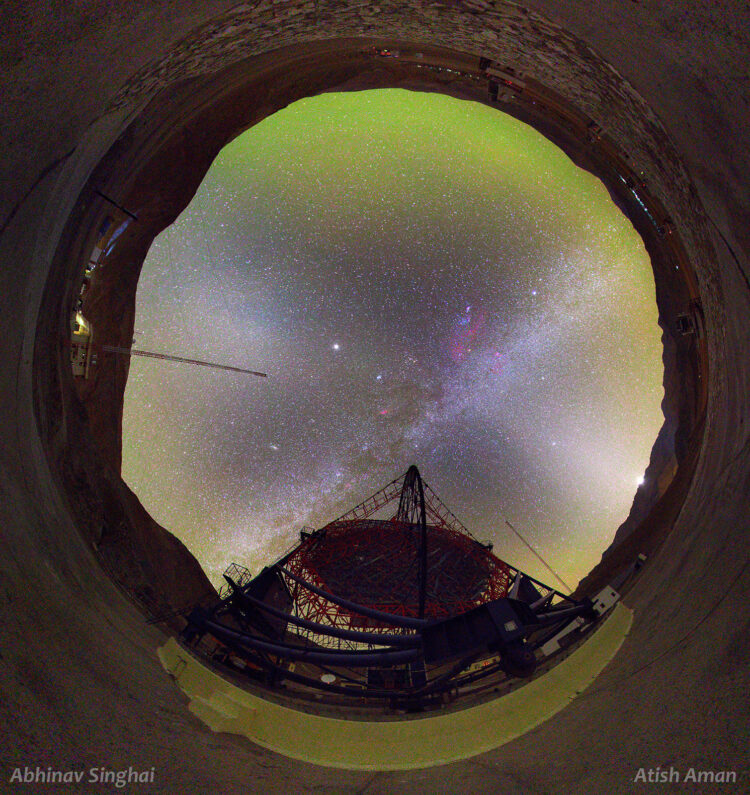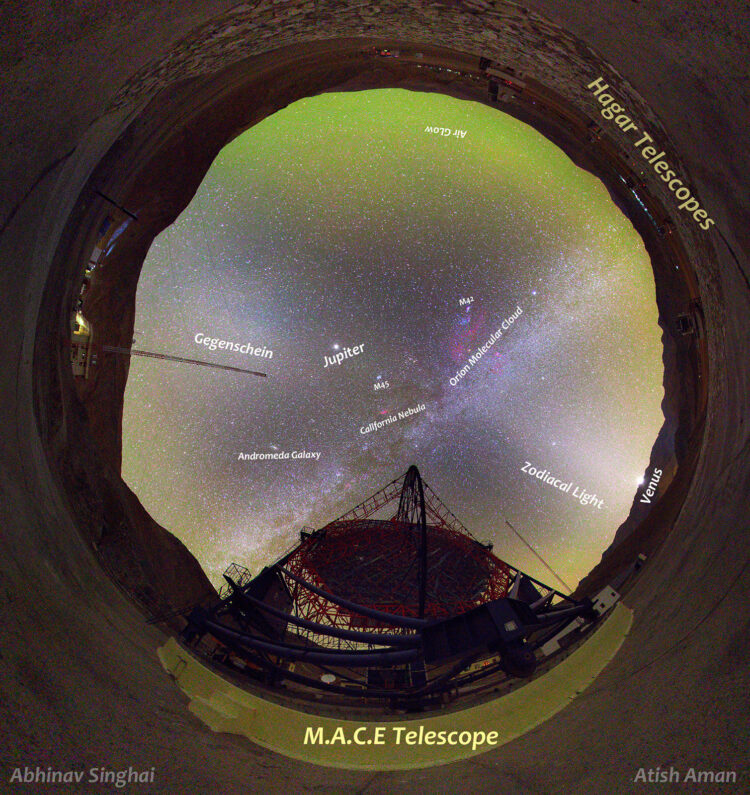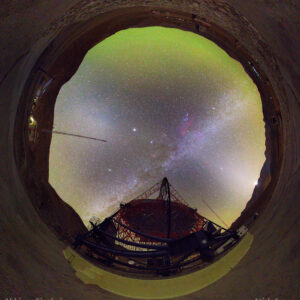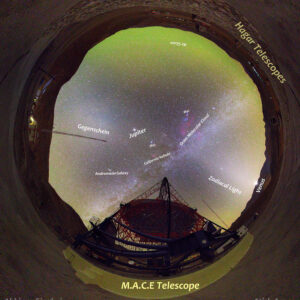Gegenschein, Zodiacal Light, and Air Glow
Description
From the photographer: “A 360×180-degree photo of the sky captured near the MACE telescope at the Indian Astronomical Observatory, Hanle Dark Sky Reserve. MACE is the second-largest and highest Cherenkov telescope in the world, studying the interaction of gamma rays from space with our atmosphere, boasting a gigantic 21mt mirror. Further away, you can also see the older generation Hagar telescope array, which also studies the same phenomenon. Hanle is one of the highest dark sky reserves in the world.
Move the slider on image to see what all is visible in the image. In this photo, various astronomical phenomena can be observed:
1.The greenish-yellow glow towards the top of the image is not light pollution but airglow
2.Several deep sky objects like the Orion molecular cloud, Andromeda galaxy, along with the Milky Way band, can be seen.
3.Planets like Venus on the right and Jupiter near the center are visible
4.The triangular glow on the right side near the rising Venus is the zodiacal light. It’s caused by the dust in the solar system towards the sun glowing due to sunlight
5.Another rarer and more difficult phenomenon to capture in this image is Gegenschein. Just like the zodiacal light, Gegenschein is caused by dust in the solar system getting illuminated by sunlight. But unlike the zodiacal light, Gegenschein is caused by the dust present in the antisolar point or opposite to the direction of the sun. So it’s much fainter. The position of Gegenschein in the sky keeps changing, and when it’s visible against the backdrop of the Milky Way or airglow is visible over it, it cannot be seen. Due to this and its faintness, shooting Gegenschein is difficult. If you join an imaginary band between Gegenschein and Zodiacal lights, that will form the band of the ecliptic.
Photo was taken by Atish Aman and Abhinav Singhai”
Technical details:
A 360×180-degree panorama created by an 8mm fisheye lens on a Nikon D810a




comments (1)